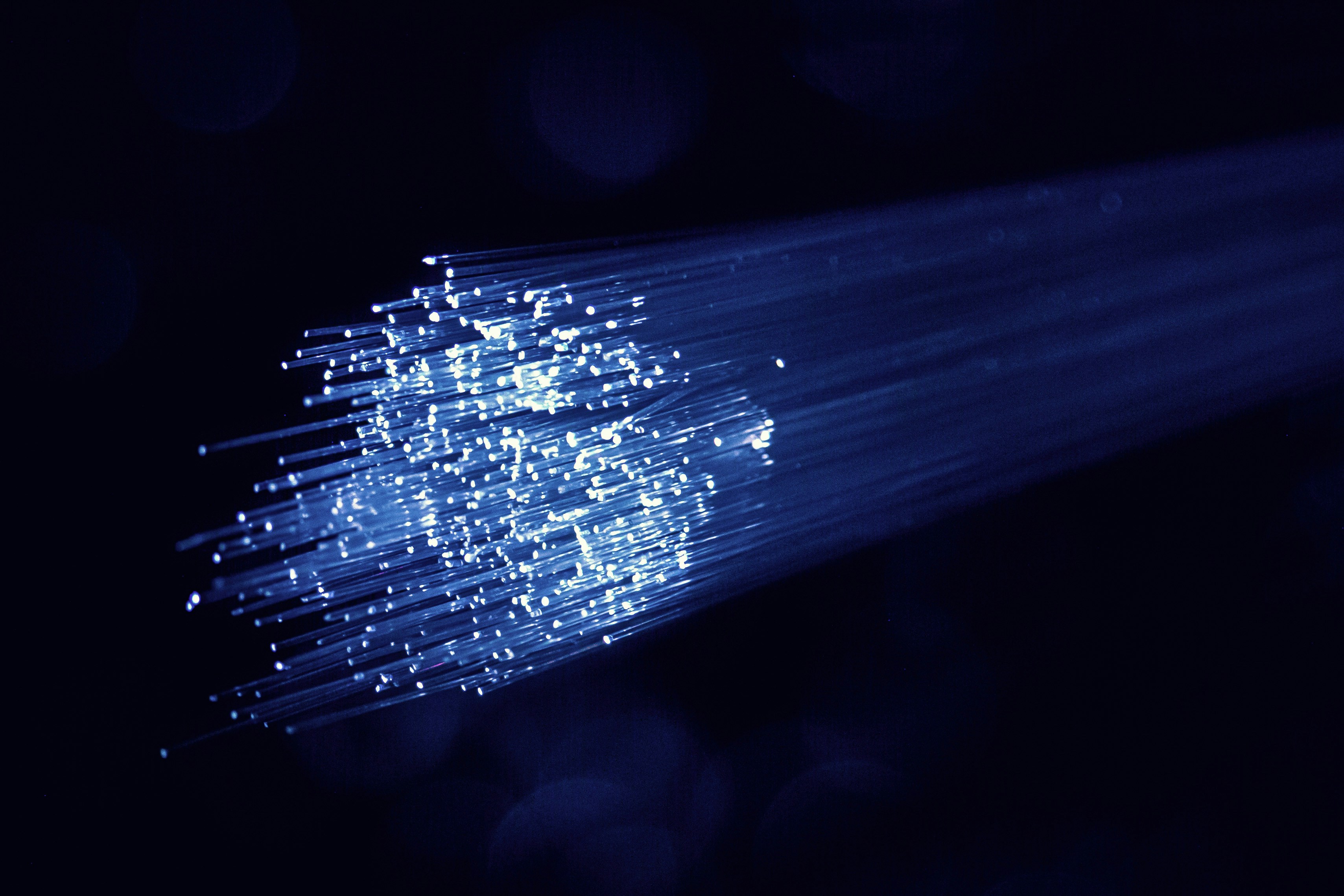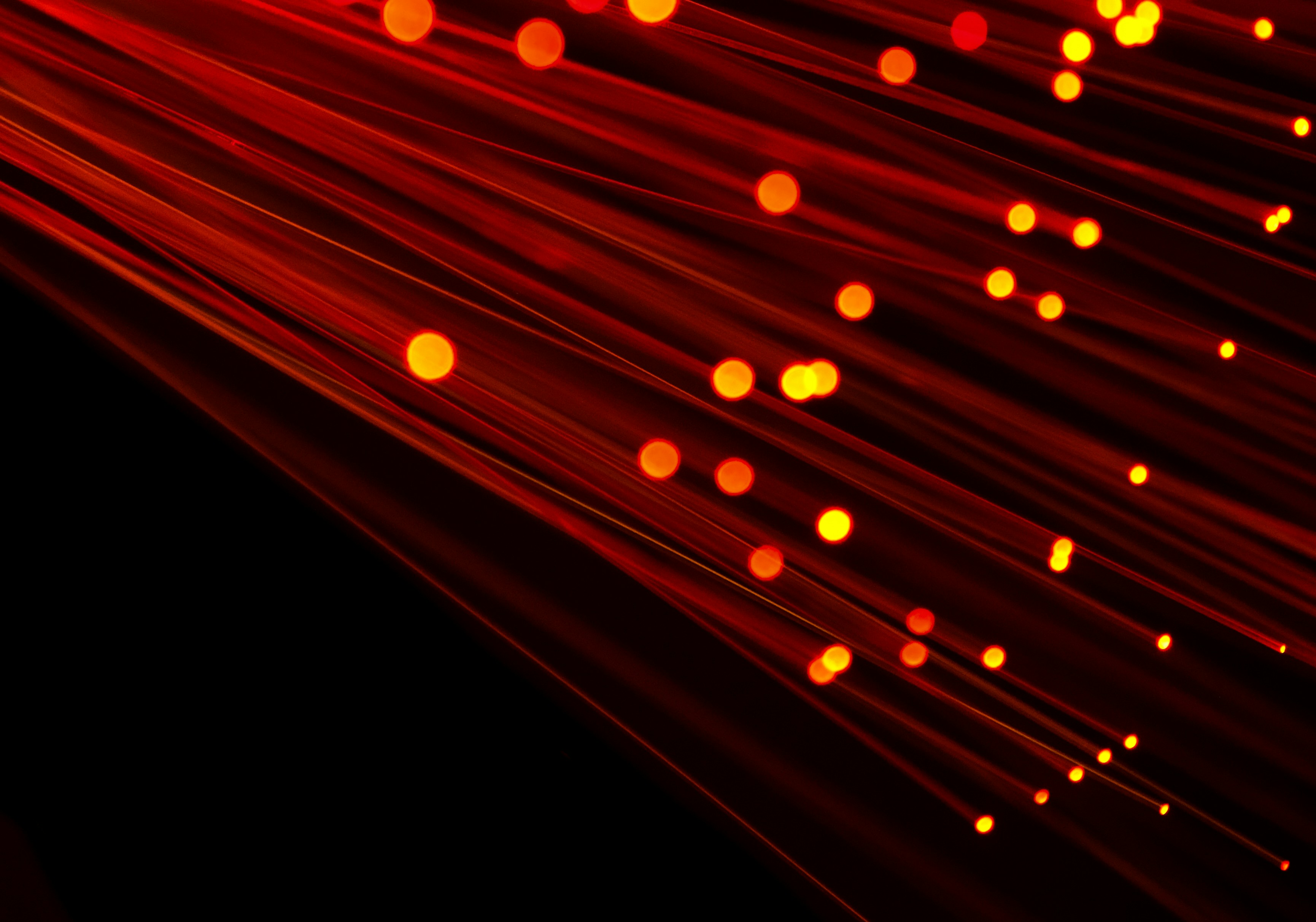If you haven’t installed fibre optic cable connection at home, you must have at least heard about fibre wire internet. It is one of the most recent and powerful inventions in the space of network technology. While fibre broadband is faster than other forms of internet, it is also more reliable and secure. So, you can use it for live streaming, online gaming, shopping, and much more. It is also being rapidly installed in commercial and business locations. In this article, we have elaborated on the basics of fibre optic cable, the functioning of fibre internet, and its different available types. So, come, let us learn something new today!
Buy Airtel Broadband with exciting benefits!
What is fibre optic internet?: Explore the real meaning of fibre-optic connection!
The latest broadband connection called fibre net or fibre internet has changed the way of data transmission from one place to another. With a fibre network, we can now send information across the globe at the speed of light.
Fibre broadband sends light pulses over fibre-optic cables to transfer data. This makes it more robust, secure, and fast than traditional forms of broadband internet.
A fibre connection is known for its superfast speed. Due to its high-speed benefits, it ensures quicker downloads and uploads, a smooth gaming experience, uninterrupted video calls, and so on. Besides, fibre also lets us do the following things with ease:
-
Cloud backup in split seconds.
-
Instant file uploads.
-
Download a 2-hour long movie in a few minutes.
-
No lagging or buffering while playing online games.
Now that you have understood the basics of fibre internet, let’s proceed further to know more about the working of an optical fibre broadband.
Primarily, there are many pieces that contribute to the advanced technology of fibre internet. However, its two key components called optical fibres and the last mile play a major role. Let us understand the two main elements of optical fibre internet in detail now!
How does a fibre optic internet work?
The thin fibre-optic strands carry data using light pulses which are converted into electrical signals or output. This signal reaches us through an Ethernet port or connection.
Components of fibre optic cable
A fibre optic cable is extremely thin and around 125 microns in diameter. It can be further divided into two parts:
1. The core
It is the innermost part of the fibre that is made from glass to help the light to pass through it.
2. The cladding
The cladding material is wrapped around the core. It is made out of a thicker layer of glass or plastic.
These two parts are bundled up together to form cables that carry pulses of LED light or laser down the line. They carry binary data, a coding system that we see on the internet. It usually travels up to 60 miles before it experiences any form of degradation.
3. The last mile
Now, after the pulses reach their designated destination, an Optical Network Terminal (ONT) converts these pulses of light into an electrical Ethernet. This, in turn, allows the light to connect to your devices, such as tablets, iPads, laptops, etc. to the internet. This last stretch of fibre that connects one to the backbone of the internet is called ‘the last mile.’
Typically, there are several forms of last-mile connections that your Internet Service Provider (ISP) instals for you. However, it generally varies on the purity of the optic cable.
Types of fibre internet
There are three common fibre optic cable types. Let us go through their basic details quickly:
1. FTTC/ FTTN/ FTTS
Fibre to the curb/cabinet, neighbourhood, or street is one of the most common types of fibre connections. In this type of fibre optic cable broadband, the fibre is delivered to a street cabinet from the farthest premise. It is then disbursed by the copper cables.
2. FTTH/ FTTP/ FTTB/ FTTD
Fibre to the home, premise, business, and desktop are direct fibre lines that are connected straight to the residence. As direct access to fibre optic broadband is provided, it allows uninterrupted access to the internet.
3. FTTB
Fibre to the building is used for apartments, hotels, and schools that require high-speed fibre internet access. In this type of fibre optic cable connection, the fibre cables are connected to a house or building. It is then further distributed across the building using existing cable connections.
Read: Broadband vs Fibre: WiFi Network Vs Cable, Which is Better For You?
Top 10 Advantages of Using Fibre Optic Cable Broadband
Here are some of the main advantages of using fibre optic cable internet:
-
Breathtaking Speed: Speed offered by a fibre optic connection is unbelievably fast. The speeds can reach up to 1 Gbps or even more in ideal conditions. So, downloading movies, streaming live matches, playing graphic-intensive online games, etc. can be done effortlessly when you install optical fibre internet at your home.
-
Reliable: The fibre optic cable used in fibre internet is sturdy and durable. So, it is less affected by external climatic conditions like rain, humidity, frost, etc.
-
Higher Bandwidth: Fibre optic cable internet easily provides bandwidth up to 1000 Mbps. This much bandwidth is enough to handle multiple internet tasks simultaneously.
-
Secure: Fibre optic broadband is secure because it is next to impossible to hack data from protected fibre-optic strands.
-
Equal Upload & Download Speeds: The upload and download speeds offered by optic cable are equal. The symmetric speeds offered by fibre network makes it consistent and efficient.
-
Less Interference: A fibre optic cable is less susceptible to weather, rust, and other forms of external interference. So, the signals are stronger and consistent which elevates your internet usage experience.
-
Low Latency: The latency associated with fibre optic WiFi is much lower than other types of internet connections. As a result, you don’t face any interruption while using the optical fibre WiFi.
-
Energy-Efficient: The fibre optic cable comes with less electrical interference which makes it energy-efficient.
-
Scalable: With the right infrastructure in place, a fibre optic network can be scaled easily. This makes it a highly profitable prospect for both network receivers and sellers.
-
Futuristic: Fibre optic internet is the best connection for smart homes. Its higher bandwidth and easy installation makes it the right internet technology for the future.
Limitations Or Disadvantages Of Fibre Broadband
Some of the limitations or disadvantages of installing fibre broadband include:
-
Costly: A fibre optic cable is costlier than regular copper or DSL connection. So, your monthly broadband bill can be higher after getting a fibre optic internet.
-
Less Available: Fibre optic network is still not available in most places in India. So, it might be less available than other forms of internet connections.
-
Fragile: As fibre optic cables are made of glass or plastic, they might get damaged while installing or maintaining the connection.
Final Thoughts
Fibre connections have undoubtedly become the need of the hour due to their high-speed advantage. Airtel fibre cable also offers fibre plans at striking deals. Airtel’s specially curated Airtel fibre optic internet plans provide unlimited data at a super-fast speed.
The Airtel optical fibre is laid out by a team of experts. So, you don’t have to worry about the installation. Also, we have a wide range of Airter fibre optic broadband plans to suit diverse internet requirements. Visit our website today and check out the latest broadband plans and offers!
FAQs:
-
What is single mode fibre?
Single mode fibre or SMF is an optical fibre that transmits data via single light mode. It is usually preferred for sending data through long distances in fibre optic connection.
-
What is a fibre optic connector?
A fibre optic connector is a device that is linked to the optical fibres to transfer data through light pulses. Different fibre optic connector types are available in the market. ISPs (Internet Service Provider) choose the fibre connector types as per their needs.
-
What is the price of fibre optic cable?
Fibre optic cables are costly and can be as expensive as $5 per foot depending upon the infrastructural settings. This makes it expensive as compared to other data transmission cables.
-
What is fibre internet? How to find fibre internet in my area?
The type of internet that uses fibre-optic cables to transmit data through light pulses is called fibre internet. You can search for the local providers of fibre optic internet in your area. To get the best fibre internet connection, you can explore Airtel fibre optic plans.



